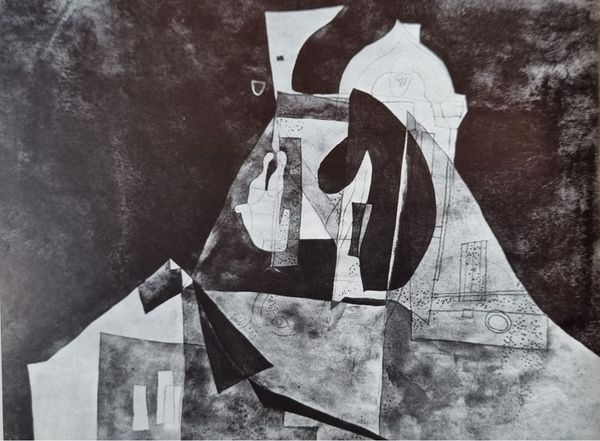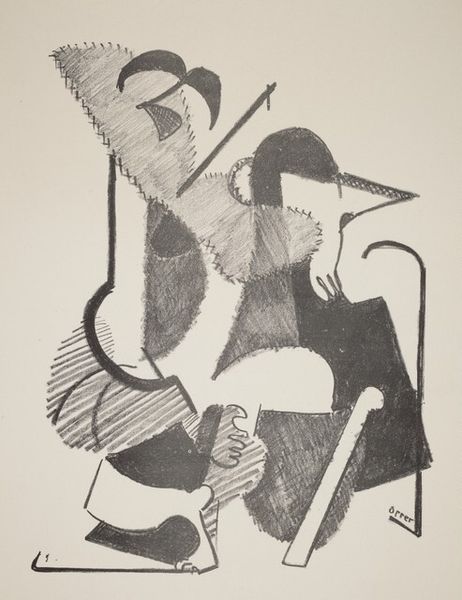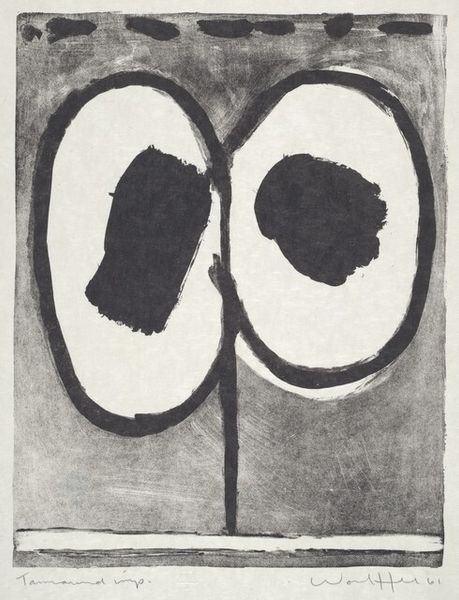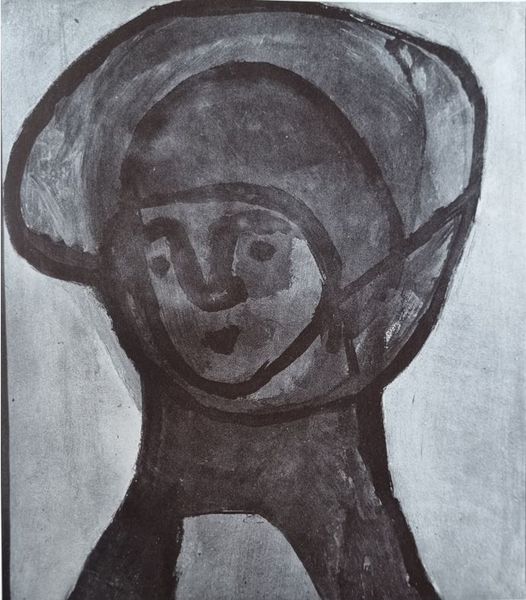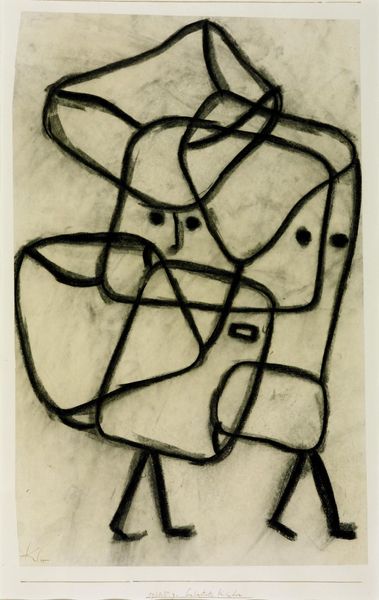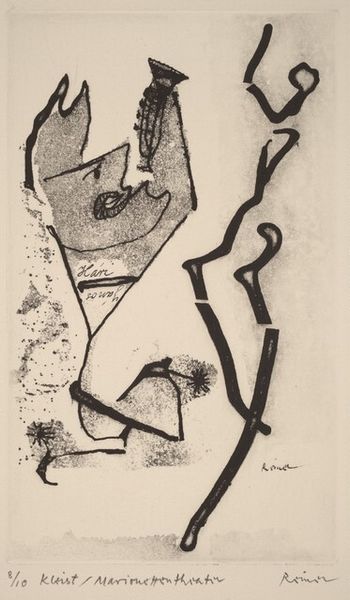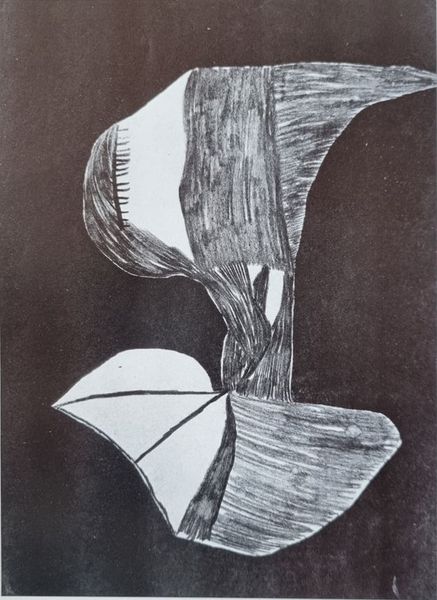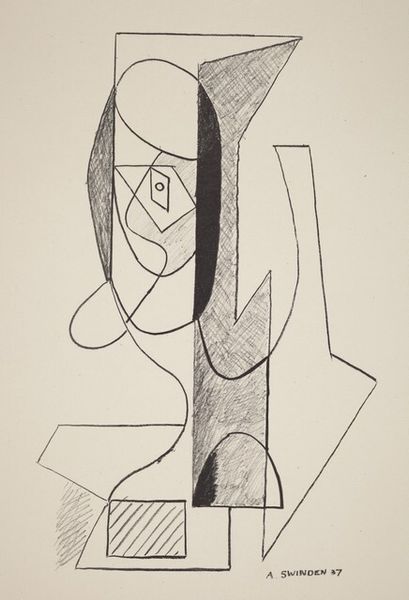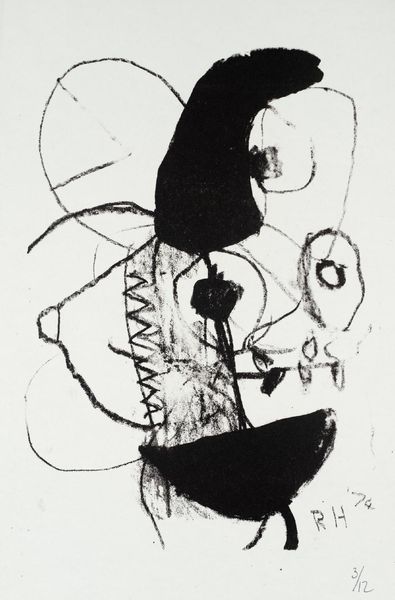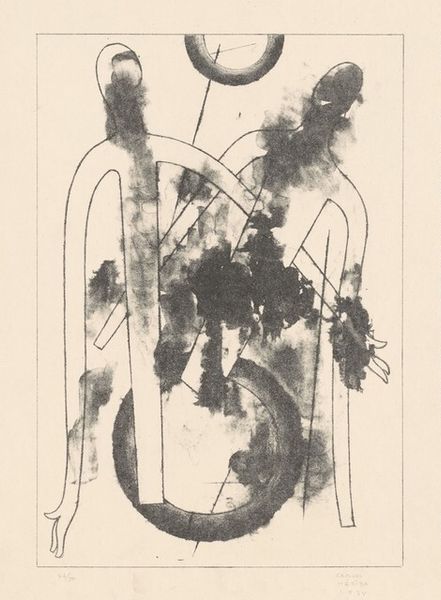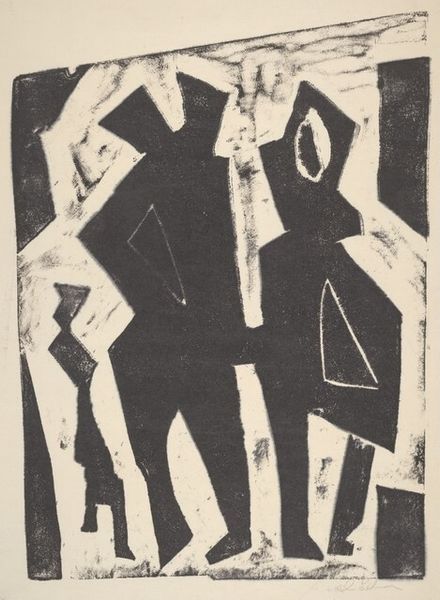
collage, print, etching
#
collage
# print
#
etching
#
sculpture
#
geometric
#
abstraction
#
surrealism
#
modernism
Copyright: Public domain
Vajda Lajos created this intriguing artwork, "Kapu, Petróleum Lámpával" in 1937. It presents a monochromatic palette, where shades of gray converge to form a complex arrangement of shapes and textures. The composition strikes a balance between representation and abstraction. We see the outline of what might be a gate, superimposed with a petroleum lamp. These recognizable shapes deconstruct and reform, offering a glimpse into Vajda’s approach to form. He challenges our perception by layering these elements. Note the contrasting textures, from the smooth gradients in the background to the coarse, patterned areas suggesting textual or ornamental details. The superimposition invites an interplay between interior and exterior, blurring the lines and prompting questions about space and meaning. The lamp itself, a symbol of light and enlightenment, is fragmented, which destabilizes its symbolic meaning, and engages us in a visual and intellectual dialogue. It is a space for constant interpretation and reflection.
Comments
No comments
Be the first to comment and join the conversation on the ultimate creative platform.
